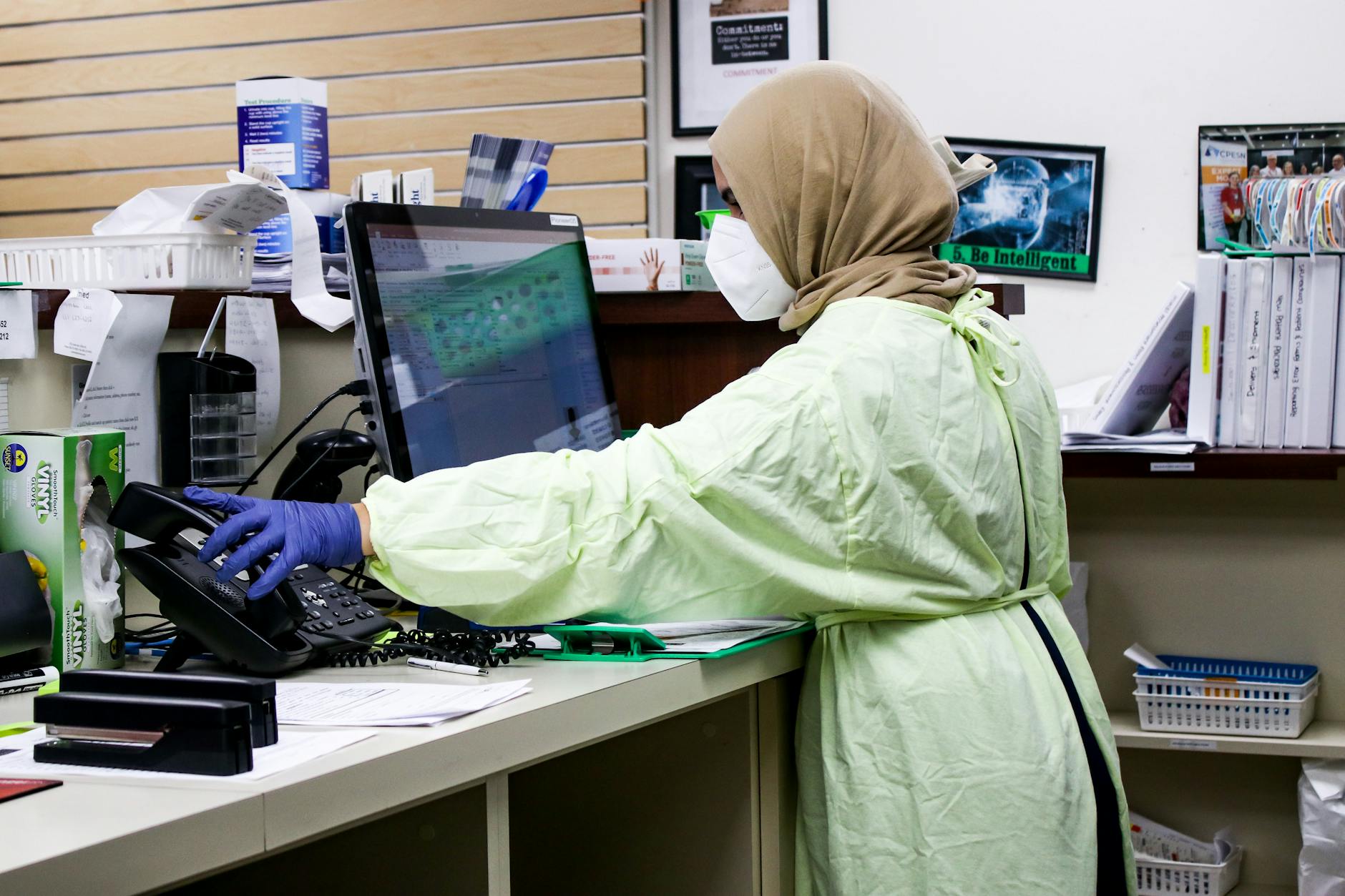Why Digital Health Tools Matter for Rural Australia

Current Health Challenges in Rural Australia
Limited Access to Services
Living on the outskirts of Queensland and knowing the challenges firsthand, I understand how crucial it is to have reliable access to healthcare services. In rural areas, finding a gp home visit perth for emergencies isn't always an option. Many of us know a trip to Bundaberg Hospital can be a long and daunting journey. This reality aligns with the struggles I've heard from countless families in rural communities, who worry about the lack of immediate medical assistance during odd hours.
Travel and Distance Barriers
Distance is a massive hurdle when it comes to accessing healthcare in rural Australia. If you’ve ever had to drive an hour or more just to reach St. Stephen's Hospital Hervey Bay, you’ll know how isolating it can feel. The sheer length of commute is almost a part of the experience in seeking medical care, making it a barrier that can deter people from getting the care they need promptly.
Resource Scarcity
Our medical facilities are often stretched, with limited staff and supplies, making it difficult to provide comprehensive care. For instance, finding penrith after hours doctors or locating after hour medical clinics near me can be challenging. Many times, an appointment or check-up requires advance planning due to this scarcity, a common narrative among those of us living in agricultural communities. Efficient resource allocation and creative solutions can help provide more robust healthcare services and ensure better health outcomes.
Role of Digital Health Tools
Telemedicine Solutions
Having spent years in the rural arms of Queensland, one realizes the beauty and challenges that come with after hours doctors hobart service. These digital health tools, particularly telemedicine solutions, are proving to be a game changer. Just as I often reminisce about the way Bundaberg Hospital adapts to modern methods, telehealth helps bridge the logistical gaps for those living far from healthcare facilities. Patients can consult with specialists without hours of driving, whether it's a routine check-up or managing chronic conditions. This is particularly beneficial when mobility is a concern, making it easier for individuals to access healthcare when they need it most.
Mobile Health Applications
Similarly, mobile health applications have carved a niche for themselves in advancing healthcare accessibility. With easy-to-use interfaces, these apps empower individuals to take control of their health. Think of them as a mini clinic right in your pocket, akin to having after hours doctor derwent park at your fingertips. The apps offer services such as medication reminders, tracking physical activity, and even dietary advice. It's like having support within reach, mirroring the services of St. Stephen's Hospital Hervey Bay but with unparalleled convenience.
Health Information Systems
Moreover, health information systems are essential in ensuring the flow of crucial data between patients and healthcare providers. These systems are pivotal in diagnosing, managing, and tracking patient progress efficiently. It reminds me of the organized approach at institutions like Lady Elliot Island Health Clinic, where every piece of information supports the well-being of our community. By leveraging these systems, we can provide seamless care, ensuring that no vital detail slips through the cracks.
Benefits of Digital Health in Rural Settings
Improved Accessibility
In the rural areas of Queensland, like those I serve near Bundaberg, one of the most tangible benefits of digital health is gp after hours access. This allows individuals, especially those in remote locations, to seek medical advice without the need for extensive travel. With a robust telehealth system, patients can bypass long-distance trips to facilities like Bundaberg Hospital. I recall a patient who, through a simple online consultation, addressed his concerns and avoided a three-hour trip. It's a practical step forward for healthcare in rural regions.
Enhanced Patient Monitoring
Telehealth technologies not only provide accessibility but improve patient monitoring. Tools integrated into health platforms can track vital signs in real-time, giving healthcare providers regular updates. This constant monitoring ensures early detection of potential issues, making intervention more timely. At St. Stephen's Hospital Hervey Bay, we have seen favourable outcomes where digital tools have streamlined how we manage chronic conditions, leading to fewer hospital visits and more proactive care.
Efficient Resource Utilization
Integration of digital health tools has led to more efficient use of resources. With telehealth providing telehealth script capabilities, prescriptions can be managed without the need for physical consultations, freeing up healthcare facilities to focus on emergencies. This efficiency is crucial in areas with limited medical personnel and supports them in delivering high-quality care without overwhelming the system. By adopting these technologies, we're better equipped to address the unique challenges of rural healthcare, using innovative methods that conserve our limited resources.
Implementation Challenges
Technological Infrastructure
As someone who has observed the landscape of healthcare in Queensland, technological infrastructure can be a major roadblock, especially when developing innovative solutions like Queensland telehealth. The vast distances and rugged terrain of our region often contribute to inconsistent connectivity, which can hinder the effectiveness of telehealth services. Investment in robust internet services in rural areas is imperative to make sure that residents receive consistent and reliable digital healthcare solutions.
Adoption of New Technologies
Convincing healthcare providers to integrate new technologies into their workflow can be a challenging task. I've seen first-hand the hesitance of some practitioners at places like Bundaberg Hospital in embracing tech-based solutions. To navigate this, it's crucial to provide ample support and evidence of how technology can streamline their processes and offer significant benefits to patient care. Moreover, demonstrating the value of platforms for after hours clinic services can highlight the practical benefits.
Training for Healthcare Providers
As we focus on the transition to digital health tools, equipping healthcare providers with the necessary skills becomes indispensable. When I think of my visits to St. Stephen's Hospital Hervey Bay, I recall the importance of training sessions in acclimating staff to new systems. Whether it's through workshops or online tutorials, ensuring that our healthcare workforce feels confident with these tools is critical to maximizing their potential in improving patient experience.
Overall, tackling these challenges demands a multifaceted approach to bolster both technology and people.
Effective Integration Strategies
Collaborative Partnerships
In my experience working as a GP just outside Bundaberg, I've witnessed how strengthening alliances can enhance healthcare delivery in rural areas. When Bundaberg Hospital collaborates with local clinics like the Lady Elliot Island Health Clinic, we see tangible improvements. By pooling resources and expertise, we prioritise patient care and address limited access to services. These efforts need to be concerted, involving various stakeholders such as governmental agencies and private sectors.
User-Centric Design
Designing healthcare solutions must focus on what works best for the folks on the ground. When I first encountered mobile health applications, I thought about my patients who are more comfortable with traditional methods. Solutions need to have user-friendly interfaces that make digital tools feel less intimidating. Whether it’s a telemedicine service or health information system, simplicity should always come first. Testing these solutions with real users in regions like Hervey Bay ensures they meet our community's needs.
Ensuring Data Security
Finally, a significant concern that comes up frequently in discussions is securing data and ensuring patient privacy. Patients in rural regions, just like anywhere else, deserve to trust that their data is safe. I've seen firsthand how adopting best practices in digital security can build this trust. Encouraging transparency and educating patients about data privacy further assures them while navigating digital health tools. It’s paramount we maintain this focus as we move forward.


